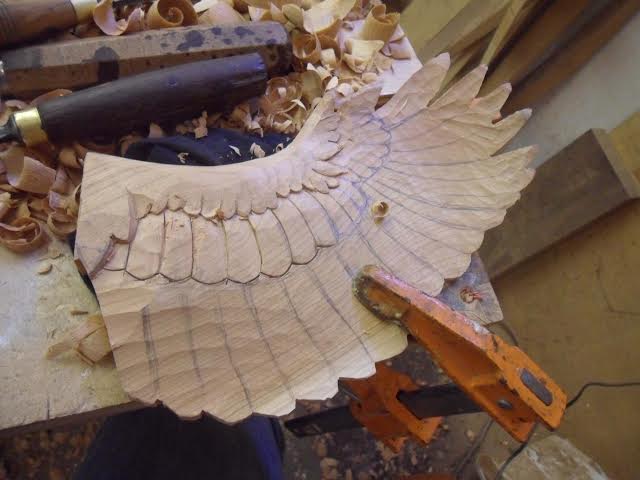Anatomy of a bronze door handle--Part 2
Sketch is done and details as to how the sculpture will be attached to a door, how to design it so that it can be cast to allow wax and metal to properly flow through the mold and not weigh a ton, it is time to move on to the next step. (you can review the first steps here). To make the mold for the body a pliant silicon membrane over the outside of the body and the legs has to be built-up. At this stage you are also “gating” the mold by adding square rod sections to the body of the bird. The silicon will from a membrane around these rods and when these rods are later removed what is left is a hollow or void through which the hot wax is poured . The mold is strengthened by being housed in a rigid metal case that keeps it true to form. Once the mold is complete it is literally cut down the middle and opened up to remove the rods and the result is a hollow replica of the birds body with funnels that have been created through which wax and later bronze can flow.
The next step is to pour molten wax into the hollow mold through the gates and slosh it around, coating the inside of the mold with liquid wax. When the wax is dry, the mold is carefully opened and the wax body is removed with the gates or protrusions attached.
We now have a one piece wax bird replica that is hollow inside and we need to turn it into a bronze piece that is hollow.
We cut around the birds legs and around a bit of his stomach to create a hole in the cavity of the wax body; we are going to cast the feet, stomach and wings as separate pieces. What we are left with is 4 parts of our bird, all in wax. Each wax piece is dipped in a clay like substance similar to the way we created the rubber mold, building up a clay slurry over each part of the bird to create a plaster like “shell” for each piece. When dry this slurry becomes rigid and forms a casing. With the bird body we will pour the slurry inside the hollow wax body and also coat the outside of the body so that, when fired, both the inside and outside will become a hollow ,walled shell. These "shelled" pieces are then baked in a kiln that will make them very rigid and strong. The heat causes the soft wax to melt out and collect at the bottom of the kiln, hence the expression "lost wax". Actually, not really lost but rather recycled. Even artists in ancient times recognized the value of re-using and recycling products.
All of these steps will result in a beautiful piece of functional art that can be used as a door pull to create an extraordinary entrance to a business or home, or enjoyed as wall art. This will become evident in our final post on the sculpting and casting process for this particular piece of architectural hardware.
You can view our entire collection of custom hardware at www.martinpierce.com.




